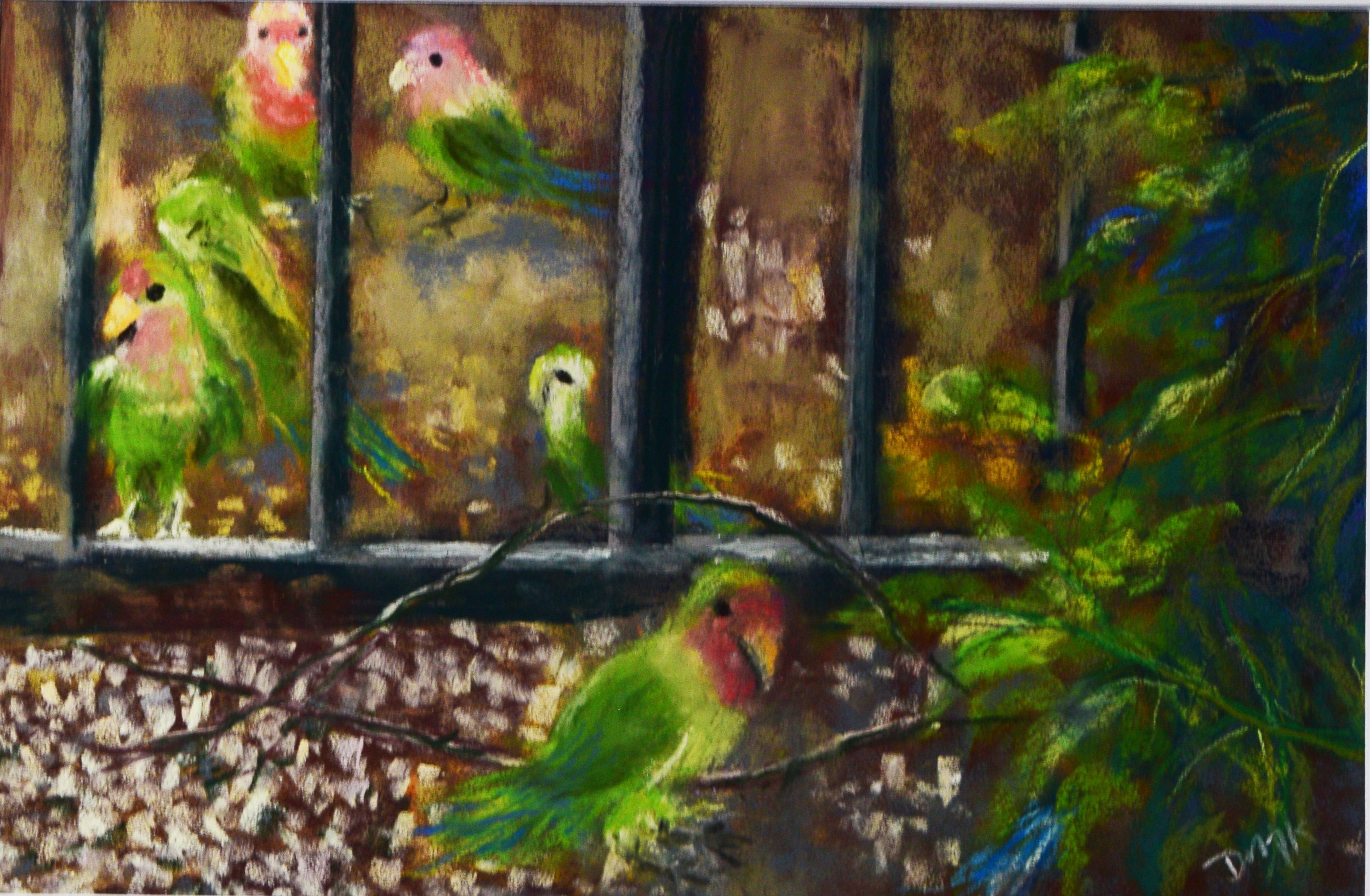 Image 1 of
Image 1 of


Parrots of Scottsdale
The Rosy-faced Lovebirds, also known as Peach-faced Lovebirds (Agapornis roseicollis), are small parrots native to southwestern Africa but have established thriving feral populations in Phoenix, Arizona. These birds are renowned for their striking neon green plumage and vivid reddish-pink throats, which create a stunning visual contrast. Their presence in Arizona is tied to a fascinating legend: they were reportedly released during a monsoon that destroyed an aviary in Apache Junction12.
During a conference in Scottsdale, I encountered these lovebirds in abundance, perched among palm trees and feeding near fences. Their lively social behavior and colorful appearance inspired me to immortalize them through pastel. My pastel painting emphasizes their radiant green feathers, complemented by the warm pink tones of their throats and faces, set against the backdrop of Arizona’s natural surroundings.
These birds are often seen in flocks, feeding on seeds, fruits, and vegetables provided by the environment or humans. Their adaptability and charm have made them a beloved sight in the Phoenix area. My painting reflects their physical beauty and tells a story of resilience and adaptation—an exotic species thriving far from its native habitat.
The Rosy-faced Lovebirds, also known as Peach-faced Lovebirds (Agapornis roseicollis), are small parrots native to southwestern Africa but have established thriving feral populations in Phoenix, Arizona. These birds are renowned for their striking neon green plumage and vivid reddish-pink throats, which create a stunning visual contrast. Their presence in Arizona is tied to a fascinating legend: they were reportedly released during a monsoon that destroyed an aviary in Apache Junction12.
During a conference in Scottsdale, I encountered these lovebirds in abundance, perched among palm trees and feeding near fences. Their lively social behavior and colorful appearance inspired me to immortalize them through pastel. My pastel painting emphasizes their radiant green feathers, complemented by the warm pink tones of their throats and faces, set against the backdrop of Arizona’s natural surroundings.
These birds are often seen in flocks, feeding on seeds, fruits, and vegetables provided by the environment or humans. Their adaptability and charm have made them a beloved sight in the Phoenix area. My painting reflects their physical beauty and tells a story of resilience and adaptation—an exotic species thriving far from its native habitat.
The Rosy-faced Lovebirds, also known as Peach-faced Lovebirds (Agapornis roseicollis), are small parrots native to southwestern Africa but have established thriving feral populations in Phoenix, Arizona. These birds are renowned for their striking neon green plumage and vivid reddish-pink throats, which create a stunning visual contrast. Their presence in Arizona is tied to a fascinating legend: they were reportedly released during a monsoon that destroyed an aviary in Apache Junction12.
During a conference in Scottsdale, I encountered these lovebirds in abundance, perched among palm trees and feeding near fences. Their lively social behavior and colorful appearance inspired me to immortalize them through pastel. My pastel painting emphasizes their radiant green feathers, complemented by the warm pink tones of their throats and faces, set against the backdrop of Arizona’s natural surroundings.
These birds are often seen in flocks, feeding on seeds, fruits, and vegetables provided by the environment or humans. Their adaptability and charm have made them a beloved sight in the Phoenix area. My painting reflects their physical beauty and tells a story of resilience and adaptation—an exotic species thriving far from its native habitat.

